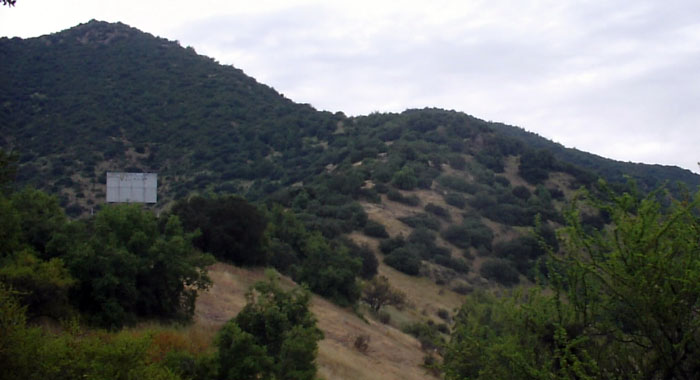Wikipedia:
A passive radio link deflection, or passive repeater is a plant that implements a microwave link, in places where an obstacle in the signal path blocks any direct, line of sight microwave link. Compared to a microwave radio relay station with active components, a passive repeater is far simpler and needs little maintenance and no on-site electric power. It also does not require additional frequencies, unlike active repeater stations which use different transmit and receive frequencies to prevent feedback. The corresponding disadvantage is that without amplification the returned signal is significantly weaker.
Passive radio relay link deflection systems in the vertical level can be realized by receiving the signal with a parabolic antenna and leading it through a waveguide to a second parabolic antenna, where it is radiated. For passive microwave radio relay link deflections in the horizontal plane, flat surfaces of metallic material are used, arranged so that the angle of incoming beam corresponds to the angle of the outcoming signal. The resulting structure resembles a billboard. For small deflection angles, cavity prisms can be used.
Similar systems are used also occasionally for TV relay transmitters or as tunnel transmitters. A Yagi antenna receives the signal of the transmitter and supplies it by way of a coaxial cable to a second antenna.
 [/url]
[/url]
A tunnel transmitter allows wireless reception in tunnels. It consists of a receiving antenna which receives the signal to be radiated in the tunnel, and a transmitting antenna installed in the tunnel, which is either a Yagi antenna or a line antenna. In principle, a tunnel transmitter can work purely passively, in which case the received signal is passed over a cable to the antenna in the tunnel. Active systems, however, are more often used. In some cases the radio frequency inside the tunnel is different from the one used by the broadcaster. More often the program inside is transmitted on the same frequency as outside, in which case the information signal should be demodulated or converted to anintermediate frequency in the outside receiver, and then modulated/shifted back in the transmitter. Otherwise feedback may occur.
Tunnel transmitters are used in Germany only for audio transmitters working in FM-range and for further radio services, such as mobile phone services which also work in this frequency range. Elsewhere, there are also tunnel transmitters for audio broadcast transmitters, which work in the long and medium wave bands. An example of this is in the Dartford Crossing tunnel near London, where the programme "Virgin 1215" in the medium-wave band and the BBC's Radio 4 on 198 kHz long wave are rebroadcast in the tunnel. Emergency information could also be relayed using this system, interrupting programming to relay warnings.
Este tema ha sido editado por chuki: 03 agosto 2015 - 12:25



 Webmail
Webmail


 Este tema está cerrado
Este tema está cerrado

 Volver arriba
Volver arriba



















